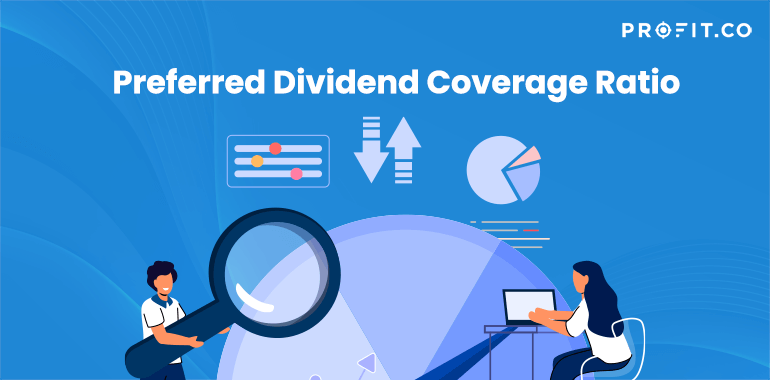This article will focus on presenting the specifications of the preferred dividend coverage ratio. This ratio assesses a corporation’s financial capability of paying the dividends owed to shareholders, depending on its net income. With that in mind, why do investors utilize it? That’s because it points how well a company is doing by comparing preferred dividends and profits. It’s as simple as this: if a company generates enough profits in order to pay the dividends, then, it is profitable.
A closer look at the Preferred Dividend Coverage Ratio
This ratio is considered to be utterly useful for both creditors and shareholders. It analyzes the company’s net income, to determine whether it is enough to address the fixed dividend amount payable on its existing preferred shares.
Potential shareholders – debt holders included, might find this ratio useful. On a different note, lenders and banks also utilize this ratio in order to determine the amount of debt a company can deal with. As a matter of fact, even common stock shareholders should be mindful of this coverage ratio; that’s because it might have an influence on common stock dividends, as well.
The ideal scenario is for the company to have higher profits than it needs for covering the dividend payments. Unfortunately, though, as you can suspect, this isn’t always the case. To that end, if a firm’s preferred dividend coverage ratio is of 1, then, this entails that the firm can meet the preferred dividend obligation. Meanwhile, a number that is lower than 1 implies that the firm is coping with serious financial difficulties.
Expressly, there are three critical pieces of information required in order to calculate this ratio, namely the net income, the par value of the preferred shares and the fixed dividend rate on preferred shares. Each piece of information can be obtained by analyzing the firm’s financial statements – such as the annual report and the prospectus.
Assessing the Formula of the Preferred Dividend Coverage Ratio
Moving on to the formula of this ratio, it is as follows:
Hence, before you can proceed with calculating the ratio, you have to compute the preferred dividends during a specific year.
In order to do that, you ought to multiply the annual dividend rate by the par value of the shares. You can find this information by investigating the preferred stock prospectus. Additionally, you might consider analyzing the PDC ratio on a quarterly basis, as well. If you do that, though, you should proceed with solving the coverage ratio equation with those figures.
Conclusion
In the event in which the preferred dividend coverage ratio is low, then, in order to assess a company’s overall strength, one should do additional investigations. In some instances, a firm might simply have a bad quarter – therefore, it shouldn’t be generalized. At the same time, it might be a good idea to compare and contrast the company’s coverage ratio from several years to determine its stability.
